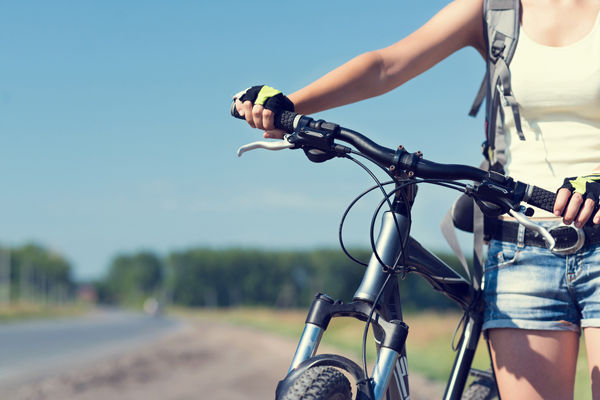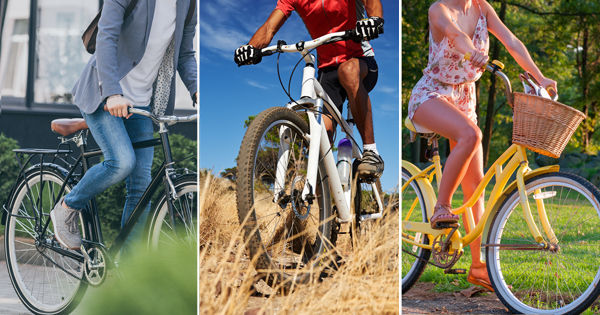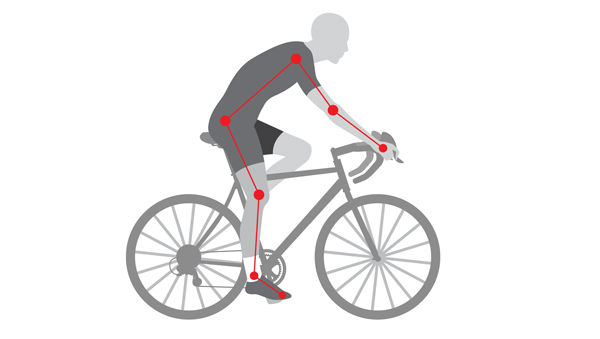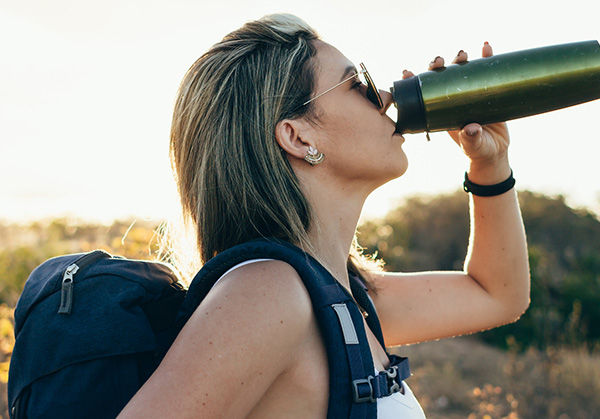Hop On... Let's Ride a Bike!
- Jack Dippel

- Apr 29, 2020
- 8 min read

Almost anyone has ridden a bike at some time. It’s fun!
Bike riding makes you feel good because it's... well... a dose of exercise and activity, a great way to keep fit. But there's more to it. It's a way to get around and observe the scenery close-up. It gives you a good feeling knowing that you're keeping the environment cleaner by not emitting harmful toxins into the atmosphere.
As summer approaches, and our activities start to move back out of the house, we'll be seeing many more cyclists outdoors.
But before jumping in (or on shall we say), let’s check a few things to make sure your bike is ready to perform.
A Good Ride Starts with a Good Bike
Riding a bike is all about having a good time, isn’t it? Then make sure the bike you have is right for you. We don’t mean you need the most expensive bike, we simply mean you need the right bike for you. It’s not hard to work out what that is, as long as you know what your priorities are.
What’s Your Riding Style?
In other words, why do you want to ride to begin with? For now, it’s probably to get out of the house, but generally speaking… is it for exercise? Is it to get from Point A to Point B? Do you want extreme excitement, such as flying through the air for the thrill of it? Do you want to race? Where will you be riding mostly? Through city streets, on paved roads or dirt trails? Once you define your style of riding, it will be easier for you to choose the kind of bike you need.
Choosing Your Bike Type
Knowing why you’re riding will help you narrow down and choose what type of bike is best for you. There are many different types and styles, you’d be surprised. Below we list a few of them.

Comfort Bikes
Comfort bicycles have wide tires and comfortable, cushioned seats. They're mainly for leisurely, recreational riding and short distance jaunts on bike paths or paved roads with flat terrain. They can be used for easy dirt trails but are best for errands, rides around town, or family outings.
Road Bikes
If you plan on doing long rides, or pavement riding, this is the bike for you. Road bikes are built for speed, have thinner tires and handlebars, and are overall, much lighter in weight. See photo below.
Hybrid Bikes
This type of bike combines the features of mountain bikes and road bikes. Hybrid bikes are perfect for those who want to experiment with both styles of riding.
Mountain/Trail Bikes
A bit more rugged than the comfort bike is a trail bike or light duty mountain bike. These bikes can take a bit more “rough stuff” than the more common bikes. While you can take them off the paved road, they are not meant for serious mountain biking. See photo above.
Cruiser Bikes
Cruiser bikes are generally one speed, heavier than the comfort bikes but with fatter tires. They are good for just that— cruising. You can ride them on a road or in the sand. That’s why you see so many in beach communities. See photo above.
Touring Bikes
Touring bicycles are for those who go long distances and faster than recreational bike riders. These bikes are built for riding on the pavement. They are lightweight bikes with more shock absorbency than comfort bikes.
True Mountain Bikes
A true mountain bike has a stronger frame and components than any other bike because they are intended for off-road and rugged terrain. The tires on a mountain bike are knobby and wide for more shock support. The seat and handlebars are positioned to allow for the rider to lean over while maneuvering the bike.
Recumbent Bikes
Recumbent bicycles are becoming very popular with older riders and those who have some limits in physical ability. The rider reclines while pedaling in a feet-forward position. The seat is much more comfortable than on any other bicycle. Recumbent bikes sit low to the ground and have multiple gears. See photo above.
Hopefully, the bike you already own is right for you. But if you’re considering getting a new one, talk with family and friends who own bikes to get their experiences, visit bike stores, do some research.
Some people start out buying a used bike in order to try it out before investing much money. Determine your budget. If you don't think that you'll stick with bike riding long term, and if you don't plan to do more than weekend riding, you don't need to spend a lot.
And of course, try before you buy! Important details will make a difference in your riding enjoyment: how it rides, its size, how it looks, color—everything.
Size Matters
Some bike models offer up to eight different sizes. To determine the right size for you, measure your inseam—this will determine the right size frame, in terms of stand-over-height. Like a pair of jeans, the right fit is really important.

Do You Have the Right Seat?
The seat (also referred to as “saddle”) is a big deal when it comes to bicycling, so we want to address this matter thoroughly. The goal is to enjoy cycling. But the experience you have can be a painful one if you’re riding on an unfitted, uncomfortable bike saddle. Do you love yours? If no, read further for ways to find the right bike saddle.
What differentiates a good bike saddle from a bad one? It will differ between any two people (especially between men and women). We don’t know if a “world’s perfect bicycle saddle” exists, however, some are markedly better than others.
The variations in design and shape take into account the anatomical differences between men and women. Some seats even have openings in the middle to decrease painful prolonged contact with male and female lower body parts.
But just like you need to know your foot measurements to buy a comfortable fitting shoe, it is often recommended that you know certain measurements to buy a properly fitting bike seat. This involves measuring the distance between your “sit bones” (the lowest point of pelvic bones, the points that contact whatever you’re sitting on).
But hold on, while this may be a good starting point, this measurement alone may not guarantee a truly comfortable seat. Why? Because it does not take into account your spine angle when you’re riding, your pelvic pressure, your gender, or your style of riding. It does not take into account the configuration of the saddle, such as density, type of foam used, or even your body weight.
This quick video from Paul at Bikefit helps to visualize what exactly we're talking about.
The only way to truly find your perfect bike seat is to personally test it. See how it feels after riding on it for some miles and over various terrain. How does it feel while you’re pedaling? Not pedaling?
We recommend 2 ways to test a bike saddle:
1 - Try out different saddles at your local shop or bike fitter
Visit a bike shop that carries multiple saddles for you to test out. You’ll need to know first-hand how it feels in your specific riding position, then you can narrow down your choices.
2 - Take it for a ride
To truly discover the best saddle for you requires taking it out for a ride. Cycling is a dynamic sport. When riding, you’re moving around on the saddle as the terrain changes or as you pedal. Test it in the actual conditions that you will be riding.
Many bike shops offer a demo program where you can test a saddle for a certain period of time (usually with a deposit). Some manufacturers even offer a satisfaction guarantee so you can buy it, and if it’s not for you, return it. (Just like buying a mattress).
You can always buy online (i.e. Amazon) and take advantage of their 30-day return policy. At this writing, Schwinn saddles are selling the best.
Maintenance: Check Your Wear and Tear
You might be someone who hasn’t ridden for months or even years. Before you take your bike out, check the wear and tear on your components, and adjust them if necessary.
With gears, chains, levers, and all the other moving parts, it may seem overwhelming to maintain a bike. Fortunately, REI has a beginner-level series of how-tos on bike maintenance.
So before your next ride, do a quick inspection of your bicycle using these ABCs—air, brakes, chain.
Air: Inflate your tires to the pressure listed on the side of the tire. Use a pressure gauge to ensure proper pressure. Check for damage on each tire (and replace it if damaged). Having properly inflated tires will help prevent flats.
Brakes: Squeeze your front and rear brake levers to make sure that the brakes engage properly and smoothly. Inspect the pads for wear. If there is less than ¼” of pad left, replace.
Make sure the pads rub against the rim, not the tire. If needed, adjust them. Check to see that you can fit your thumb between the brake lever handlebar when the brakes are squeezed all the way
Chain: Inspect the chain and make sure it is free of rust and gunk. Same for the gears. Grime on your chain acts like sandpaper as it moves across the gears.
Keeping your chain lubricated and everything clean will ensure your bike shifts easier and the drivetrain (made up of the front chainrings, rear cassette, rear derailleur, chain) will last longer, adding years to your bike. Amazon sells a bike chain cleaner and a chain lubricant that are best sellers with great reviews.
Tony, from YourBicycleDoctor.com, dives in deeper. His 10-minute video goes into a little more detail on what to look for without getting overcomplex. (Thank you, Tony!).
This is just a start. There's a lot more to a bicycle for sure—and if you'd like to dig deeper on best practices for cleaning and maintaining one, we will be bringing you more on that in future articles.
If you don't already own one, a bike tool kit and a bike repair stand would be handy to have on hand, so think about Father's Day if your dad is a bike lover (or Mother's Day for that matter).
Why All The Fuss is So-o-o-o Worth It
Cycling is great because it's a low impact aerobic exercise. It varies in intensity which makes it suitable for just about anyone. Compared to jogging, cycling is easy on your body, making it a gentle option for people who want an intense workout without stressing their joints. It can even resolve some discomforts such as lower backaches and stiffness.
As older folks know, balance tends to decline with age and inactivity, so getting in a daily bike riding routine can work magic. Keeping your bike upright and stabilizing your body helps to improve overall balance, coordination, and posture. Improved balance is beneficial in the prevention of falls and fractures.
Beyond all the physical benefits it offers, cycling also eases feelings of stress, anxiety, even depression. It helps get you out of your "mental noise" by forcing you to focus on the road and your surroundings and experience the present moment. So if you feel bored or lethargic, go hop on a bike and ride for 20 minutes or so. Remember that exercise releases "endorphins" which are the "feel good" hormones. That's why so many people make exercise part of their daily routine.
So keeping your bike well maintained is important. It really isn't that much fuss after all, when you weigh the return on your investment. And if you want to see even more benefits that a bike riding habit provides, take a look at this article from Healthline Magazine, "11 Benefits of Cycling".








Comments